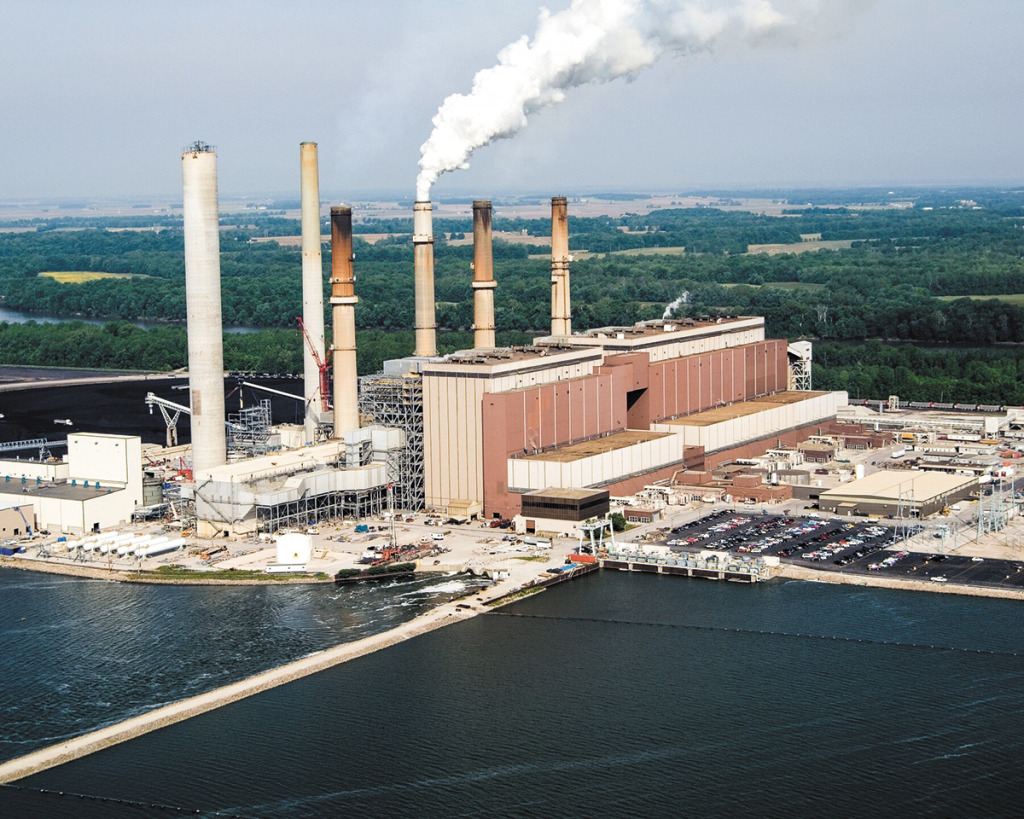Subscriber Benefit
As a subscriber you can listen to articles at work, in the car, or while you work out. Subscribe NowDraft federal regulations for toxic coal byproducts could cover nearly 50 exempted dumps spread across 14 locations in Indiana.
The Environmental Protection Agency’s new rule—released last week—would extend monitoring, closure, and cleanup provisions to certain landfills, ponds and other sites for the first time. “Coal ash,” the catch-all term for particulate matter produced by burning coal, can contain dangerous carcinogens like arsenic, cadmium and mercury.
Power plants are a major industrial source of toxic wastewater pollution around the country. Most of their coal ash sites are concentrated in the East, between the mid-Atlantic seaboard and the Midwest. More than a third of them are in five states, Indiana, Illinois, Ohio, Pennsylvania and Kentucky, according to data compiled by Earthjustice.
The 14 Indiana sites are Bailly, Breed, Clifty Creek, Dean H. Mitchell, Edwardsport, Frank E. Ratts, Gibson, Merom, Michigan City, Noblesville, R. Gallagher, Stateline Energy, Tanners Creek and Warrick.
“This is a really big deal,” said Lisa Evans, senior counsel for not-for-profit environmental litigator Earthjustice, in a news release. The proposal arises out of settlement to a lawsuit involving the organization, several Hoosier plaintiffs and others.
Exemptions go to court
Although utilities for decades have dumped coal in unlined landfills and ponds throughout the country, no national standards for coal ash existed until 2015.
That year, an initial EPA rule went into force. But it excluded landfills that stopped taking in waste before the effective date, as well as ponds at power plants that stopped generating energy before the effective date.
An Earthjustice analysis found that the regulations left out 566 landfills and ponds and 242 plants in 40 states. In Indiana alone, that meant 25 landfills and 23 ponds at 14 sites.
Earthjustice represented a coalition of groups that sued the EPA that year, culminating in a 2018 D.C. appeals court decision that nullified the exemptions. And the organization filed suit again in 2022, on behalf of several Indiana organizations and others, seeking to force promulgation of new requirements tailored to the exclusions.
Last week, the EPA released the draft regulations. Those in charge of the 48 dumps left out of the original rule could face new requirements if it’s finalized—although the EPA said it would phase in compliance deadlines.
Indiana litigants celebrate
Hoosier organizations celebrated last week’s announcement, noting that Indiana lawmakers have blocked state regulators from promulgating stricter standards.
“We have worked for years to get safer coal ash disposal via state policy, but our efforts were blocked since the majority in Indiana’s General Assembly insist on limiting state environmental standards to no more than what is required federally,” said Indra Frank, who directs environmental health and water policy for the Hoosier Environmental Council.
“In Indiana, safe coal ash disposal depends on a strong federal rule,” Frank concluded, in a news release. The council was an intervenor in the 2018 case, and was a plaintiff in the recent suit.
The proposed rule changes would extend requirements for groundwater monitoring, corrective action, closure and post-closure to inactive landfills. And the EPA hopes to include any other places coal ash was put directly on the ground, like structural fills sites.
The EPA also specified that it would levy similar requirements—as well as regulations on structural stability assessments, inspections, record-keeping, publicly accessible websites—to inactive ponds.
“We are hopeful this rule will hold these industries accountable and send a message that community members and taxpayers will no longer be responsible to clean up their mess,” Dulce Ortiz, co-chair of Clean Power Lake County, said in a news release. “We all deserve healthy communities and environments that our families and future generations can enjoy.”
Clean Power Lake County is another plaintiff on the recent case, alongside the National Association for Advancement of Colored People’s Hoosier and LaPorte County branches, and others.
NAACP Indiana State Conference President Barabara Bolling-Williams highlighted NIPSCO’s Michigan City plant in her remarks.
“Without these new protections, NIPSCO could continue to ignore the toxic leaking and the threat this coal ash poses to the Lake [Michigan] and our drinking water,” Bolling-Williams said. “These tougher EPA safeguards will force NIPSCO to safely clean up decades of toxic waste to protect those neighborhoods and the drinking water of millions of people.”
Please enable JavaScript to view this content.


Good. All of these sites need to be cleaned up for the health of everybody in the communities in which coal ash pits reside.
And in Indiana, cleaning them up will make for plenty of silver linings. There are coal ash ponds by the power plant in Michigan City along Lake Michigan. The power plant is closing. If the ash ponds get cleaned up, it can be redeveloped back into lakeshore and Indiana will have a very long, uninterrupted beach along Lake Michigan. More money will be brought in through tourism than the power plant or any replacement industrial use every will.
This is great and wind into the sails of solar and wind energy generation. Sustainable energy generation is already on the up and up and farmers and large property owners are reaping the rewards. People outside of major cities are selling land at nearly 2x the average acre value to install solar. Wind turbines payout $800+ per month a pop and take up very little real estate allowing farming to continue after construction.